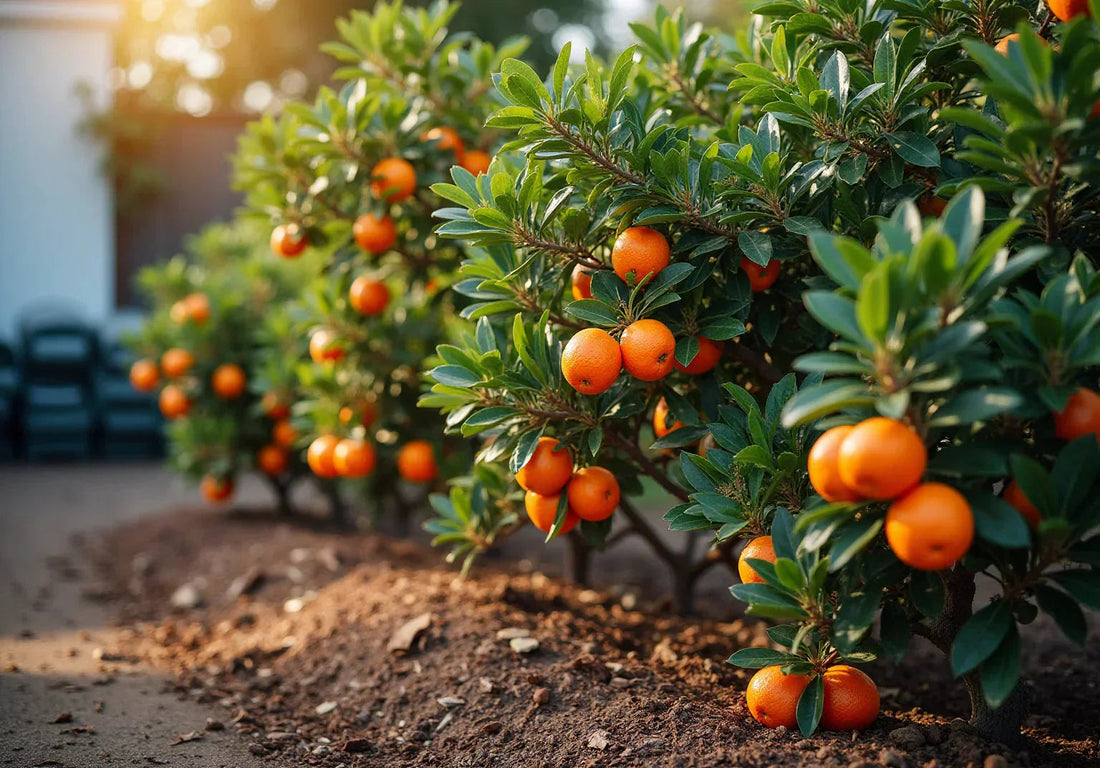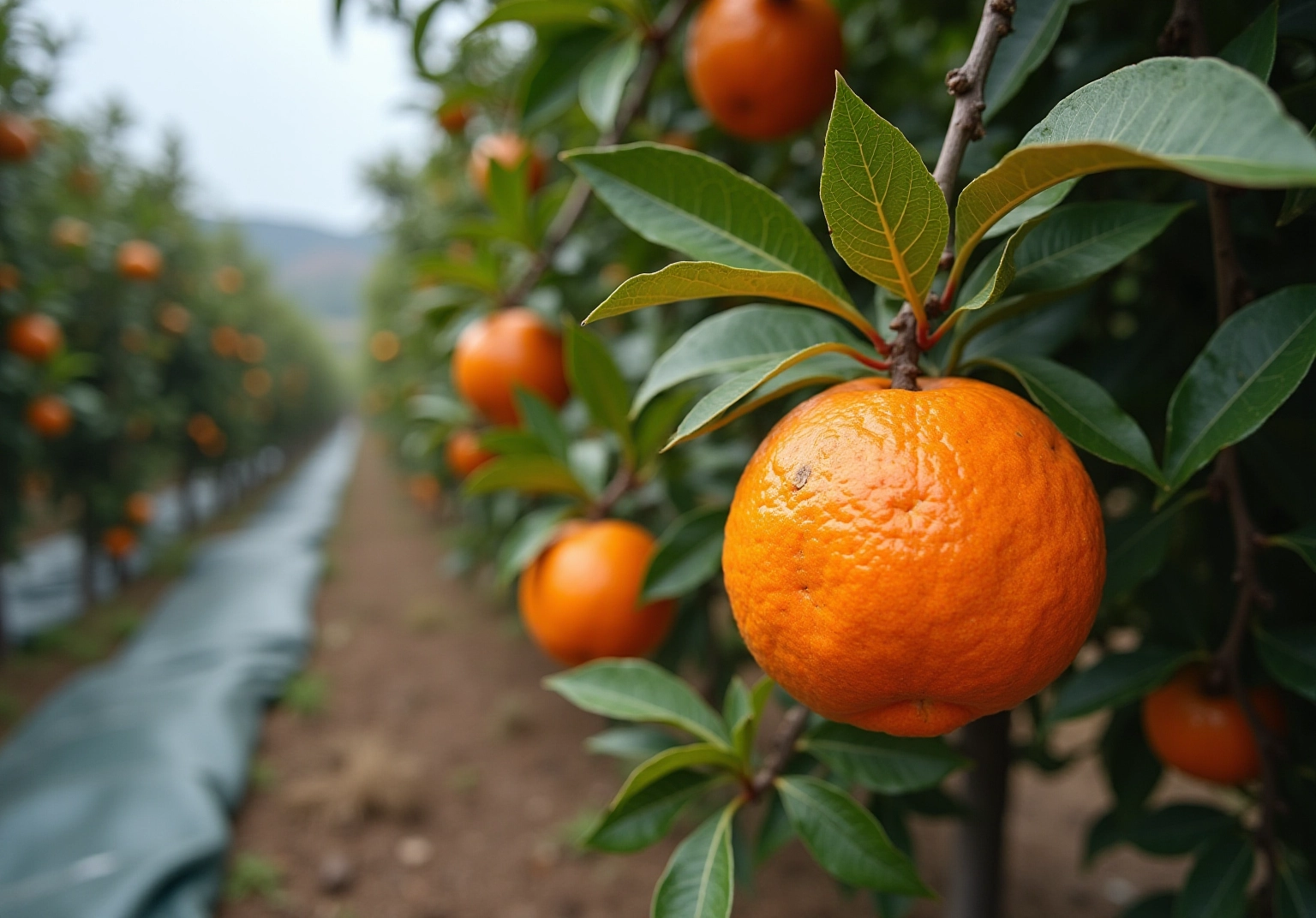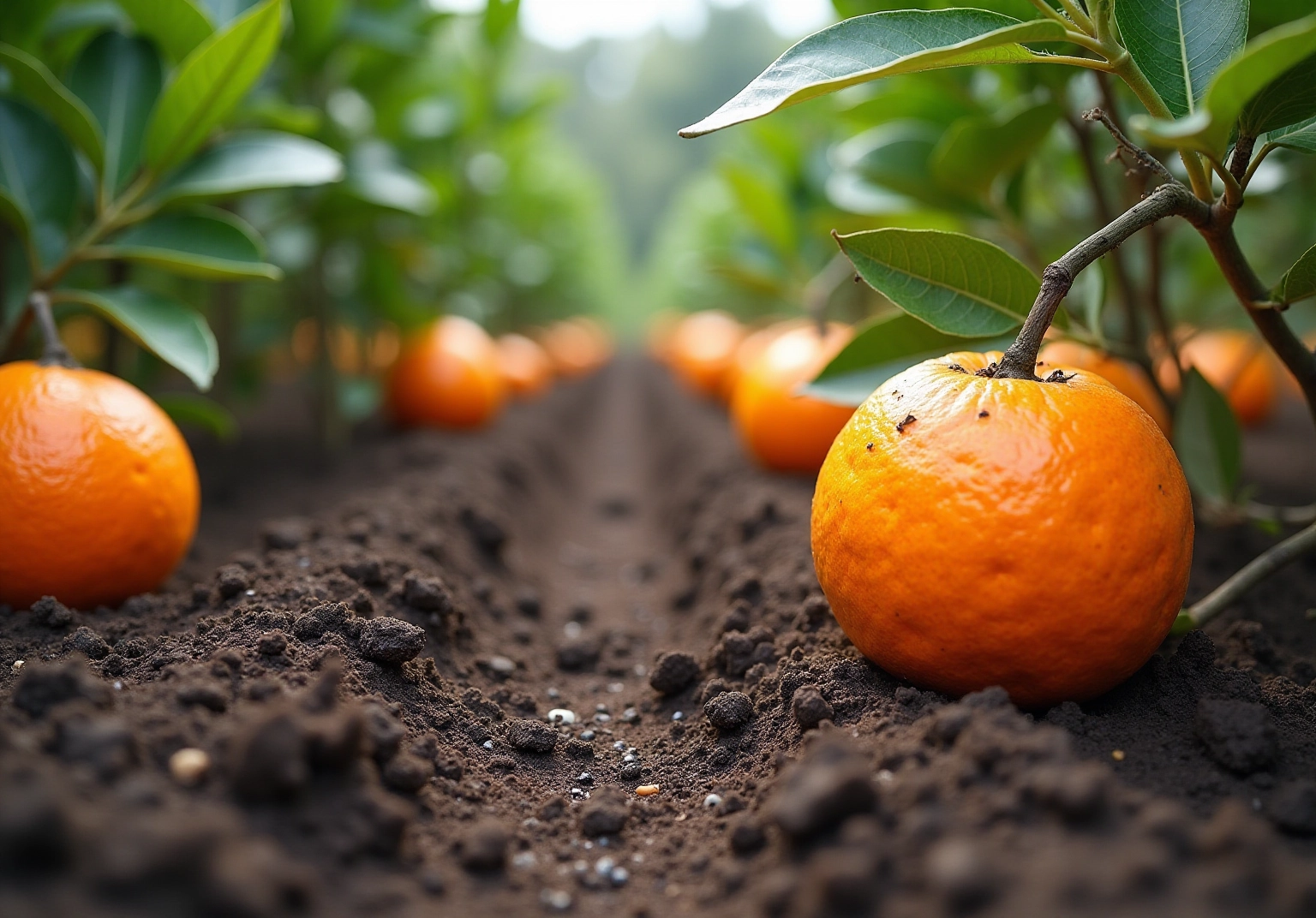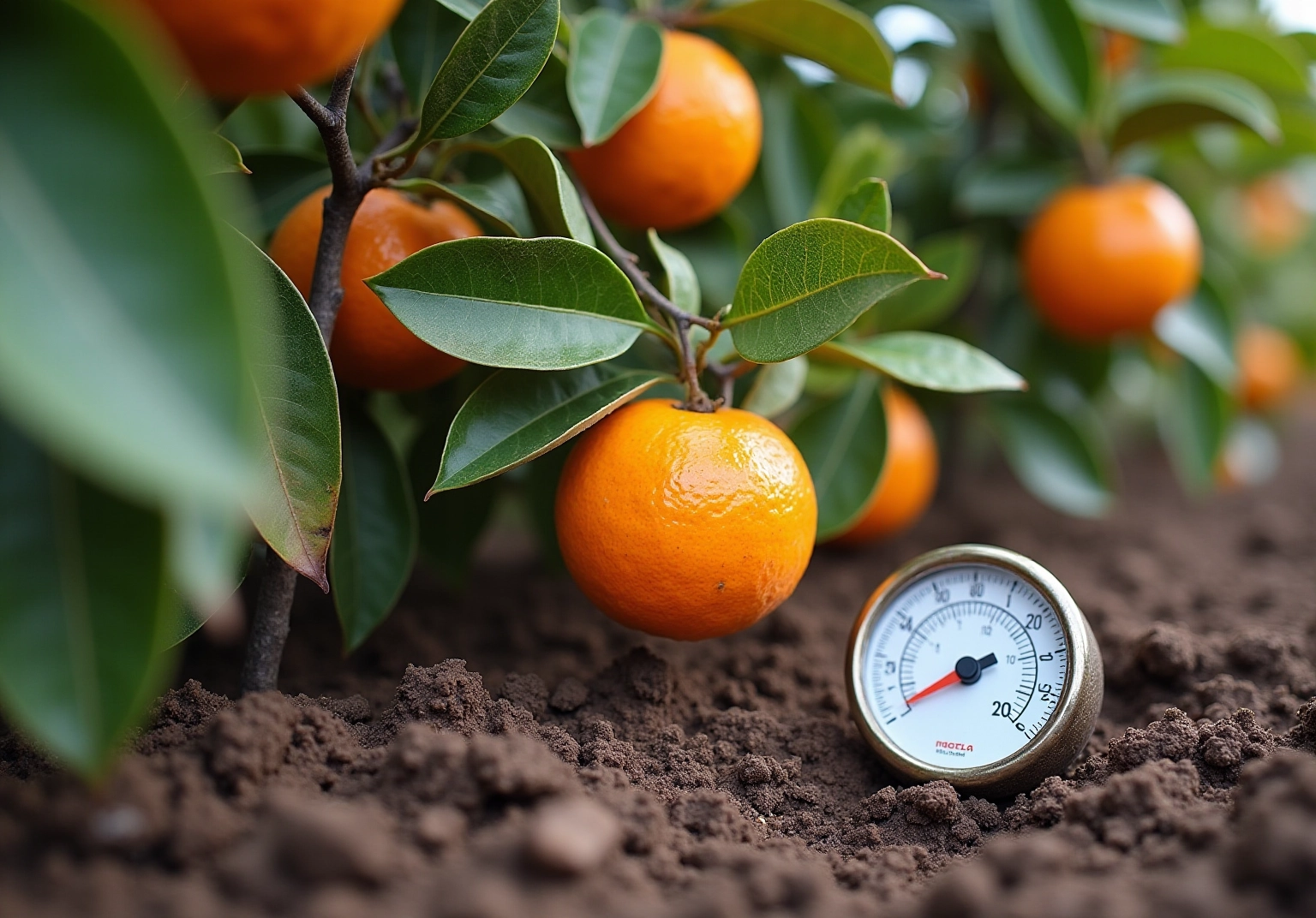
4 Steps to Improve Cara Cara Orange Cold Tolerance
Share
Cara Cara oranges, celebrated for their sweet flavor and vibrant pinkish-red flesh, encounter distinct challenges regarding cold tolerance. Gardeners aiming to cultivate these delightful fruits must navigate the delicate balance of protecting their plants from frost damage while ensuring optimal growth conditions.
By understanding environmental factors and implementing effective protective measures, gardeners can enhance the cold resilience of these citrus gems. This article explores how gardeners can effectively safeguard their Cara Cara oranges against the chill, ultimately leading to a bountiful harvest.
🍊 Buy Cara Cara Orange for your garden
🛒 Cara Cara Orange Tree for Sale from Everglades Farm.
1. Understand Cold Tolerance in Cara Cara Oranges
Cara Cara oranges, a delightful variety of navel orange, are celebrated for their sweet flavor and distinctive pinkish-red flesh. These plants demonstrate moderate chill resistance, typically the cara cara orange cold tolerance varieties, which can withstand temperatures as low as 25°F (-4°C) for short durations. However, prolonged exposure to temperatures beneath this threshold can lead to frost damage, adversely affecting both the health and productivity of the plant. It is essential for gardeners to identify indicators of frigid stress, which may include:
- Leaf drop
- Fruit damage
- Stunted growth
By observing these signs, prompt actions can be taken to safeguard the plants during severe winter conditions.
Understanding the average minimum temperatures for this type of citrus fruit and applying protective measures—such as frost blankets or strategic positioning near warmer structures—can greatly enhance the cara cara orange cold tolerance against cold stress. Furthermore, citrus plants of the Cara Cara variety favor a soil pH ranging from 6.0 to 7.0 for optimal growth. They require deep watering once or twice a week during the growing season to maintain soil moisture. For successful cultivation, ensure that these trees receive at least 6 to 8 hours of direct sunlight daily.
With proper care, these citrus fruits can yield over 20 pieces, making them a valuable enhancement to any garden. Moreover, these fruits are rich in vitamin C, offering nutritional advantages that attract health-conscious gardeners.

2. Evaluate Environmental Factors Impacting Cold Tolerance
To effectively assess the environmental factors influencing the cold tolerance of your Cara Cara oranges, consider the following aspects:
-
Climate Zone: Identify your USDA hardiness zone, which indicates the minimum winter temperatures your area typically experiences. The 2023 USDA Plant Hardiness Zone Map indicates a warming trend, with numerous areas transitioning to a higher zone, affecting the viability of different fruit varieties, including specific citrus. As noted by Dr. Christopher Daly, this shift translates into about half of the country moving to a warmer 5-degree half zone, which can significantly affect gardening decisions.
-
Microclimates: Recognize any microclimates within your garden. Regions that receive more sunlight or are protected from strong winds can generate zones of warmth, improving the resilience of your plants. For example, planting close to south-facing walls or in sheltered areas can greatly enhance the growth and strength of these citrus fruits. As highlighted by Mark Collins, understanding these localized conditions can be crucial for successful gardening.
-
Soil Conditions: Ensure your soil is well-draining yet retains moisture. Nourishing soil serves as a barrier for roots against low temperatures, enhancing overall health and resilience in your trees. Incorporating organic matter can improve soil structure and moisture retention, which is crucial for preserving the health of your citrus fruits.
-
Watering Practices: Maintain sufficient soil moisture prior to chilly periods. Moist soil retains heat more effectively than dry soil, which is important for cara cara orange cold tolerance as it provides a protective buffer against freezing temperatures. This method can be essential in avoiding frost harm to your fruits during unforeseen chilly spells. As many gardeners have experienced, proper watering can make a significant difference in plant survival during colder months.

3. Assess Current Cold Tolerance in Your Garden
To assess the current cold tolerance of your Cara Cara oranges, follow these steps:
-
Visual Inspection: Begin with a thorough check for signs of low temperature damage, such as browning leaves, fruit drop, or stunted growth. These indicators are essential for evaluating how well your tree has endured low temperatures, particularly in terms of cara cara orange cold tolerance. Notably, the USDA found that 28% of early and midseason oranges exhibited evidence of freeze damage, underscoring the importance of this inspection.
-
Soil Temperature Measurement: Utilize a soil thermometer to measure the temperature around the root zone. Understanding how cold the roots are during the winter months is crucial for assessing their health. Average soil temperatures for citrus plants in winter can provide valuable insight into the cara cara orange cold tolerance and potential risks.
-
Plant Age and Health: Take into account the age and overall condition of your plant. Younger plants and those under strain—due to pests or illnesses—may be more vulnerable to frigid harm. As highlighted by plant care experts, vegetation with significant damage may require more time to recuperate, emphasizing the necessity for a thorough assessment.
-
Historical Data: Examine past weather records for your region to comprehend the usual chilly periods and how your trees have performed previously. This examination can help you anticipate future risks. The USDA's evaluation of freeze harm in Florida fruit serves as a useful guide for understanding the effects of chilly events on citrus vitality.

4. Implement Strategies to Enhance Cold Tolerance
To enhance the cold tolerance of your Cara Cara oranges, consider the following strategies:
- Proper Planting Location: Selecting a planting site that offers protection from harsh winds and receives ample sunlight is crucial. South-facing slopes are ideal, as they warm up faster. Additionally, planting your citrus plants in bare, non-turf ground can help avoid temperature drops that often occur in grassy areas.
- Mulching: Applying a thick layer of organic mulch around the base of the plant is beneficial for insulating the roots and retaining soil moisture. Research indicates that adding mulch can reduce water stress severity by an average of 18%, making it a valuable practice for enhancing the Cara Cara orange cold tolerance during chilly periods.
- Frost Protection: Utilizing frost fabric or coverings to shield your plants during forecasted chilly periods is essential. Ensure that the covering does not touch the foliage to prevent damage. As Barton Joffrion, a County Agent, notes, "It is challenging to identify a threshold temperature at which it becomes essential to safeguard citrus plants from freezing temperatures," emphasizing the importance of proactive measures.
- Irrigation: Providing sufficient moisture to your plants before a frigid event is key, as damp soil can assist in retaining warmth. However, it is advisable to refrain from watering during freezing temperatures to avoid ice accumulation around the roots, which can be detrimental to the plant's health.
- Fertilization: Utilizing a balanced fertilizer in late summer promotes healthy growth, but it is important to reduce nitrogen levels to encourage dormancy before winter. This adjustment aids in enhancing Cara Cara orange cold tolerance, allowing trees to acclimate better to cold conditions and increasing their resilience against frost damage.

Conclusion
Enhancing the cold tolerance of Cara Cara oranges is crucial for gardeners who wish to enjoy the sweet, nutritious fruits of this delightful variety. By recognizing the specific needs and vulnerabilities of these trees, actionable steps can be taken to shield them from frost damage and secure a healthy yield. A strategic combination of planting techniques, environmental assessments, and proactive care can significantly bolster the resilience of Cara Cara oranges against cold stress.
Key strategies encompass:
- Selecting optimal planting locations
- Maintaining soil health
- Employing protective measures such as mulching and frost coverings
Furthermore, regular evaluations of the trees’ condition and surrounding environmental factors can yield valuable insights that inform improved care practices. By being vigilant to the signs of cold stress and responding with effective interventions, gardeners can protect their Cara Cara oranges and encourage robust growth.
Ultimately, the endeavor to enhance cold tolerance in Cara Cara oranges transcends the protection of a singular crop; it embodies a broader commitment to sustainable gardening practices. Highlighting the significance of understanding climate influences and soil conditions can lead to healthier plants and a more fruitful harvest. Taking proactive measures today can ensure that these vibrant citrus trees flourish even in challenging conditions, allowing their sweet rewards to be enjoyed for seasons to come.
🍊❄️ Protect Your Cara Cara Oranges from the Cold!
Start your journey to a thriving garden with Everglades Farm's premium tropical trees today.
👉🏻 Explore Orange Trees Collection
👉🏻 Explore Citrus Trees Collection
Frequently Asked Questions
What are Cara Cara oranges known for?
Cara Cara oranges are a variety of navel orange celebrated for their sweet flavor and distinctive pinkish-red flesh.
What is the cold tolerance of Cara Cara oranges?
Cara Cara oranges demonstrate moderate chill resistance and can withstand temperatures as low as 25°F (-4°C) for short durations. However, prolonged exposure to temperatures below this threshold can cause frost damage.
What are the signs of frigid stress in Cara Cara orange plants?
Signs of frigid stress include leaf drop, fruit damage, and stunted growth.
How can gardeners protect Cara Cara oranges during cold weather?
Gardeners can protect Cara Cara oranges by using frost blankets or positioning them near warmer structures to enhance their cold tolerance.
What soil pH do Cara Cara oranges prefer for optimal growth?
Cara Cara oranges prefer a soil pH ranging from 6.0 to 7.0 for optimal growth.
How often should Cara Cara orange trees be watered?
Cara Cara orange trees require deep watering once or twice a week during the growing season to maintain soil moisture.
How much sunlight do Cara Cara orange trees need?
Cara Cara orange trees need at least 6 to 8 hours of direct sunlight daily for successful cultivation.
What are the potential yields of Cara Cara orange trees?
With proper care, Cara Cara orange trees can yield over 20 pieces of fruit, making them a valuable addition to any garden.
What nutritional benefits do Cara Cara oranges offer?
Cara Cara oranges are rich in vitamin C, providing nutritional advantages that attract health-conscious gardeners.


